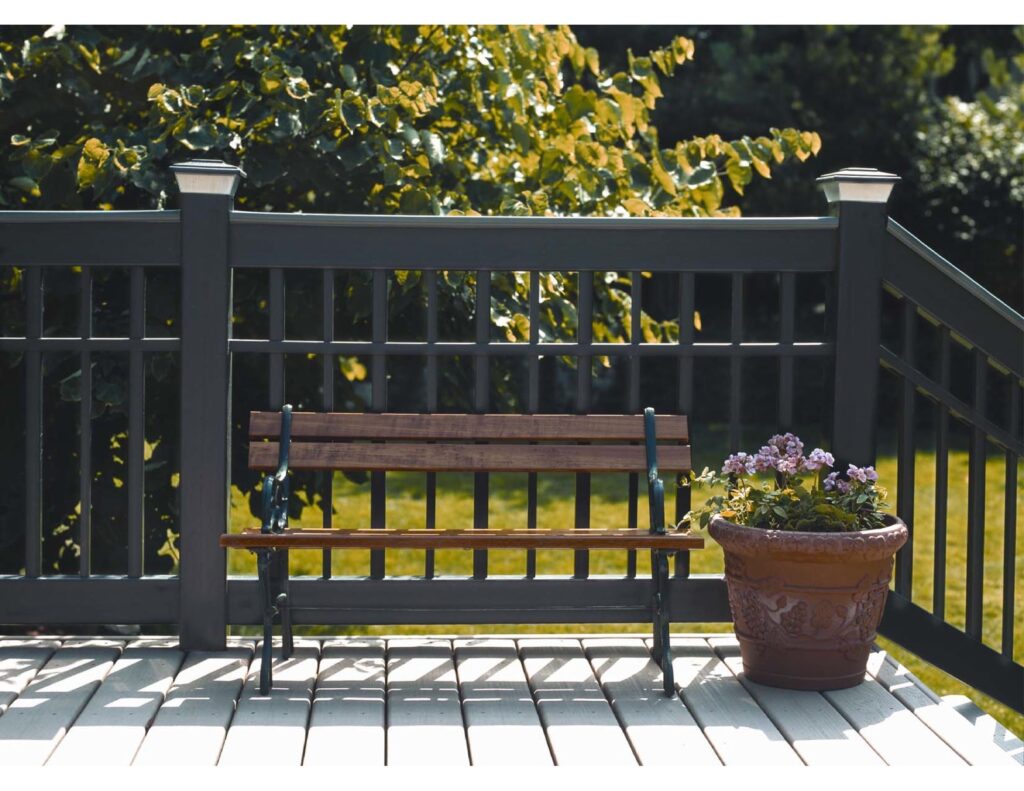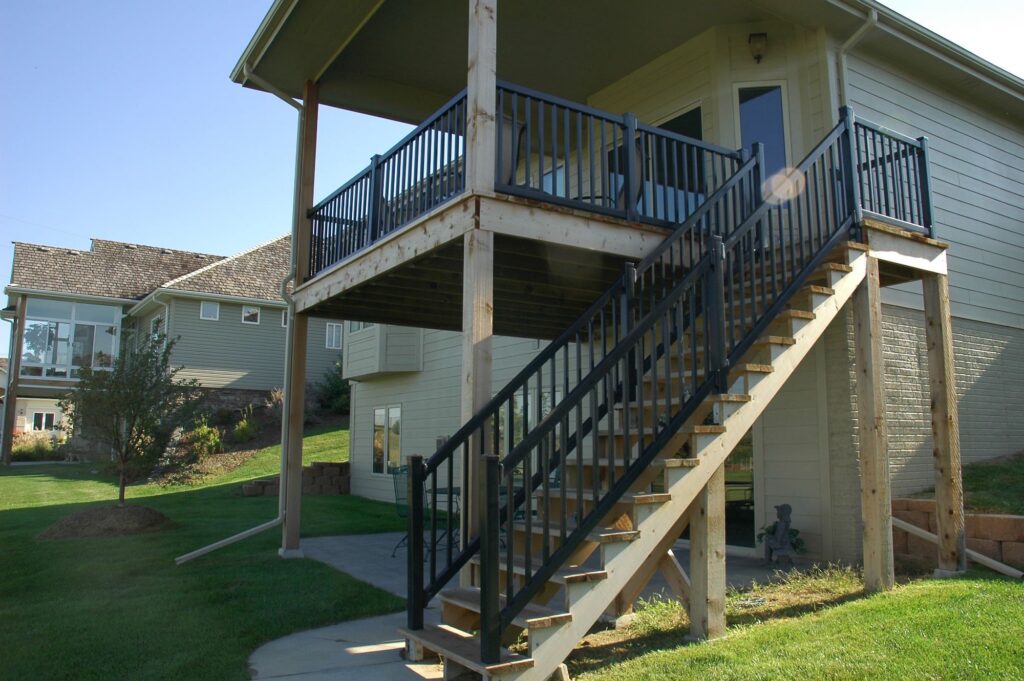18 Years of Proven Performance

18 Years of Proven Performance

Being a deck owner comes with a lot of great perks. From parties with friends and family to casual lounging, having a well-constructed deck is definitely a plus for you as a homeowner.

As you plan out your new deck project, there are a number of deck railing materials & tips to consider.
One of the most visible parts of your deck is the deck railings. With attractive and sturdy deck railings, your deck will look great and complement your home’s decor.
Are you confused about how to choose your deck materials? Don’t worry, here are some tips to help you quickly decide on which deck railing system is best for your deck project.

One of the most important considerations you’ll need to keep in mind is the cost of railing materials. Whether you choose aluminum railings, wood railings, vinyl deck railings, or another material, you should know that each material comes with varying costs and railing options.
When you’re building and installing a deck railing system, it may be tempting to choose the cheapest railing option. But, this can backfire on you down the road if you’re cheap deck railing system breaks and could even lead to a lawsuit if someone is injured.
So, don’t try to be a cheapskate when it’s time to browse railing systems so you can decide on the perfect railings for your deck. Instead, think long-term and invest in a low-maintenance option like vinyl railings.

It’s quite common for new builders to forget to check building codes and any zoning codes or permitting requirements. While it can seem like a hassle, taking time to make sure your deck railing system is in compliance can save you a massive fine and a BIG headache down the road.
As you look at the various requirements or guidelines, be sure to notice if there any specific styles that aren’t allowed. You may also want to so see whether there are restrictions on the railing materials you can use to make your deck.
That way, you don’t invest in iron, wood, vinyl, or aluminum railing and have to return it and buy another railing system.



After you’ve research local regulations and building codes to see what’s allowed, you want to pick the key railing components.
Here’s a list of key railing components you’ll need to consider for your railing:
Before you install your deck railings, double-check the measurements and sizes of your deck railing components. Also, be sure to check local zoning requirements and adjust your plans accordingly – it’s obviously easier to do this before you install your deck.
If you’re not using a deck railing system, you may need to purchase wooden posts, cut them to the appropriate size, mark them, and drill holes.

The topmost rail is the horizontal portion of your deck railing system that is attached to the tops of each vertical deck railing post. Because it’s the most visible and accessible part of the deck railing, the railing is often decorated with styles and ornaments to accentuate a desired style or aesthetic.
There are numerous considerations to keep in mind as you plan out your deck railing:
Do you want a simple square post style that conveys a modern look? Or, do you prefer to have a more rounded railing?


This aspect of your railing is known as a railing profile and it determines whether you want a railing with a flat surface or one with a rounded profile.
Depending on which railing materials you choose, you’ll have varying levels of customizability in terms of shape, color, and other options. Wood can be milled to almost any shape so if you want a custom-designed decorative railing cap, wood may be your best bet.
Aluminum railings offer strength and easy installation for an affordable price. Although they aren’t the best in terms of appeal, they can be a quick way to get a decent railing for your deck.
If you want a low-maintenance railing system for your home, this is where vinyl deck railing can make a big difference, offering strength, flexibility, and enduring beauty. Unlike aluminum railings, vinyl railings can be customized to look like a wood railing without its maintenance hassles.
As you examine your options for deck railings, it’s a good idea to look into whether vinyl railings are a better choice than wood or aluminum railings for your home.
The accessories and color of your railing are important to have the exact environment you want for your guests and friends as they hang out on your deck.


Dark-colored deck railings are best if you want your deck to blend seamlessly into areas with a lot of trees and foliage. On the other hand, decks of a lighter color will stand out from foresty areas or other heavily wooded areas.
If your deck is located on a lake or lots of water, you should choose a darker color for your deck. A dark-colored deck will stand out against the watery background, while a light color will blend in with ocean or lake backgrounds.
On the other hand, lighter-colored railings stand out better on decks near lakes and other large bodies of water.

Most people think that using vinyl railings is a bad idea. This is because most companies make their vinyl product options with composite material blends that weren’t able to withstand exposure to direct sunlight for long periods of time. So, when deck owners tried to use vinyl railing systems for their decking project, the vinyl would become chalky and eventually fade over time. This has unfortunately given dark-colored vinyl fencing and dark viny railing for decks a bad name in the fencing world.
At BlacklineHHP, however, we’re changing vinyl’s bad reputation by manufacturing heat-resistant vinyl product options that retain their color for decades and don’t become chalky when placed in sunny areas for a long time.
If you’re still considering your options for your decking project, consider using vinyl instead of wood or aluminum. Using vinyl, you’ll have less maintenance required than an aluminum or wood choice.
Got a question? Give us a call